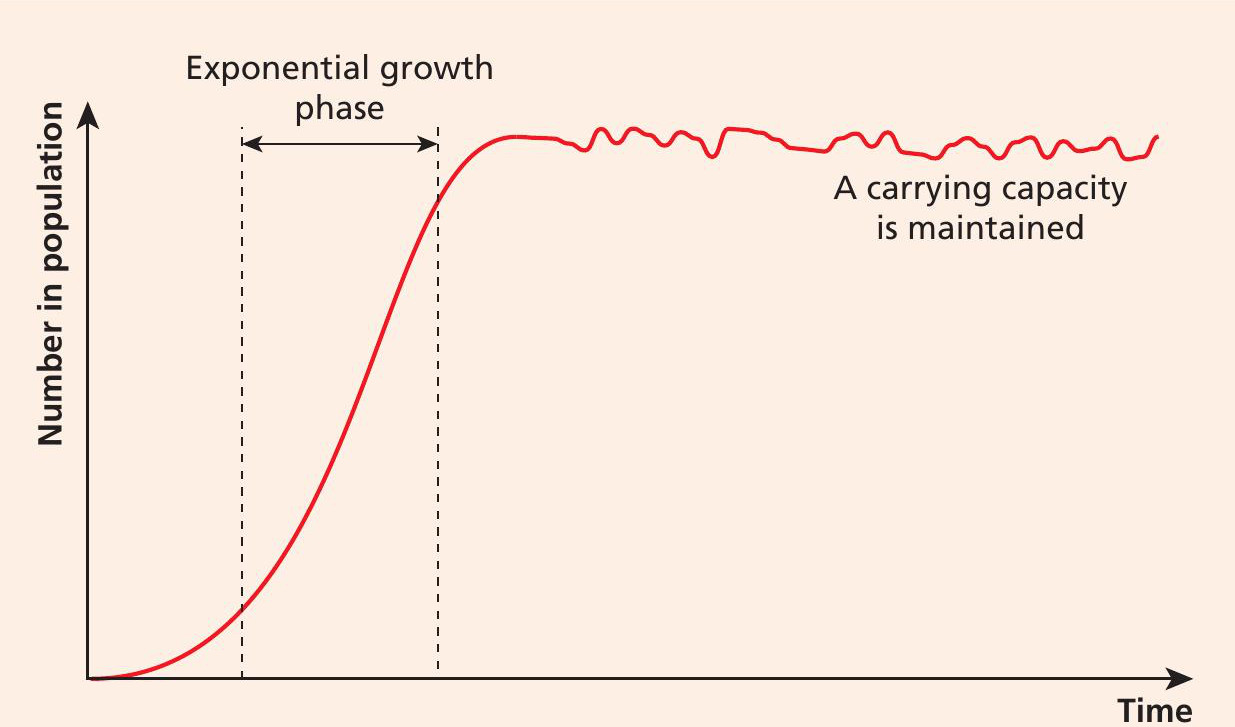
If a single E. coli bacterium was left to multiply without any restrictions, the world would be covered in a layer of bacteria 30cm thick within just 36 hours. Theoretically, any other lifeform could also take over the sea or land given enough time. So why has no single species done so? The answer lies in carrying capacity.
Let’s take deer as an example. For a population of deer to increase in number, there must first be plenty of food and space available. Inevitably, some deer will die from predation, disease and old age. However, if the deer breed faster than they die, the population grows with increasing speed. This is called the exponential growth phase (see Figure 1) and, in theory, it could continue indefinitely.
Your organisation does not have access to this article.
Sign up today to give your students the edge they need to achieve their best grades with subject expertise
Subscribe




